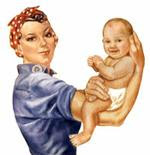The Fine Art of the Handshake by: Michael Dalton Johnson
Your handshake says a lot about you. It can convey confidence, warmth, and honesty, or it can signal weakness, uncertainty, and disinterest. Either way, it sends a subtle yet powerful message about who you are, that is not lost on prospective buyers. Use these pointers to ensure your handshake sends the right signals and creates a good impression with prospects and customers:
• Avoid the power grip. A handshake should be firm, but not overly forceful. Beware of the unconscious tendency to pull the other person toward you as you shake. This can be interpreted as aggressive, and the prospect's resistance to you may go up a notch or two.
• Nothing wimpy. It may seem painfully obvious, but it's amazing how many salespeople offer weak, perfunctory handshakes. This is a major turnoff to many customers. Firm and friendly always wins.
• Look 'em in the eye. As you extend your hand, establish eye contact and smile. Show some teeth! A warm and sincere greeting can make you an instant friend—and all things being equal, people prefer to buy from friends.
• Get a grip. Never grasp just the other person's fingers. Take their entire hand completely in yours, and gently pump it two or three times.
• Turn on the charm. You've been talking with a customer on the phone for several months, and meet them in person for the first time at a trade show. To express your pleasure at finally meeting face to face, you may want to cover his extended hand with your left hand briefly during the handshake. This increases the familiarity and warmth of the handshake. Do not attempt this with someone you don't know. However, it is often a pleasant gesture when you are shaking hands with someone you've met previously. It simply says, "I'm very glad to see you again."
• What to say? No handshake is complete without a spoken greeting. You can't go wrong with, "It's a pleasure to meet you." When meeting someone of high rank, such as the chairman of the board or founder of a company, you may want to up the ante with, "It's a great pleasure to meet you." After the initial greeting, your conversation should begin while you are still shaking hands, for example, "John tells me you've made some significant additions to your product line." Your hand should be slowly and somewhat reluctantly withdrawn as the person begins to speak. This slow withdrawal indicates your keen interest in the person and what he is saying.
• What's your body language saying? Posture is important, so stand erect, about three feet (one pace) away from the client, with your hands out of your pockets. Face the client squarely; never approach from an angle, or when the subject is engaged in conversation or otherwise distracted. Wait until you have his full attention before extending your hand.
• Saying goodbye. When the meeting is over, it's time to shake hands again. You now have the opportunity to leave a lasting impression. If you've established rapport with the buyer, it's a good idea to gently grasp his right forearm with your left hand during the handshake, and restate any promises you may have made during the meeting, for example, "I'll put the report you requested in the mail to you today, and give you a call next Wednesday. I enjoyed meeting you." This two-handed shake signals your interest and commitment to your customer.
• Practice makes perfect. Much like dancing, the fine art of the handshake takes practice. Stand before a mirror and extend your hand. Check to see if you're projecting an image of confidence, warmth, and enthusiasm. Remember, your handshake is a powerful business asset that can help you close more sales, and build lasting and profitable relationships. The time you spend working on it will be time well spent.
This article is excerpted from Top Dog Sales Secrets, a bestselling book of winning sales advice from 50 top experts. You will get instant access to $3,000 worth of BONUS SALES TOOLS including Jeffrey's indispensable Little E-Book of Closing when you buy today.
skip to main |
skip to sidebar

Preparation is Key

Black or Grey Suit is Best

tips and tricks for those on the job hunt. how to get noticed!! learn the unwritten rules of the job search from a professional recruiter and networker.
Research Dresscode Prior to Interview

Preparation is Key
Keyword Search ME!
Classic Interview Attire

Black or Grey Suit is Best
My Upcoming Events. . .
Blog Archive
-
▼
2008
(116)
-
▼
April
(11)
- Ask the Recruiter: Dealing with gaps in employment
- It's a Digital World
- What Not to Wear. . . for an interview
- Common Interview Questions
- Handshake How to:
- Easy Does It: Resume Design
- Interview Styles
- Resume Don'ts
- Visit me at OKC CCNG as a guest presenter!!!
- ASK the Recruiter--Job Search While Pregnant
- Quick Resume Tips
-
▼
April
(11)
Twitter Updates
About Me

- Jessica
- I am currently recruiting for professional positions in the Oklahoma City Metro.


